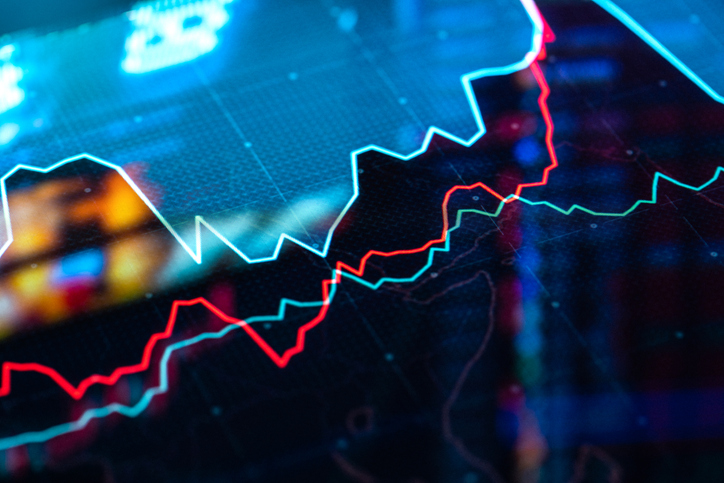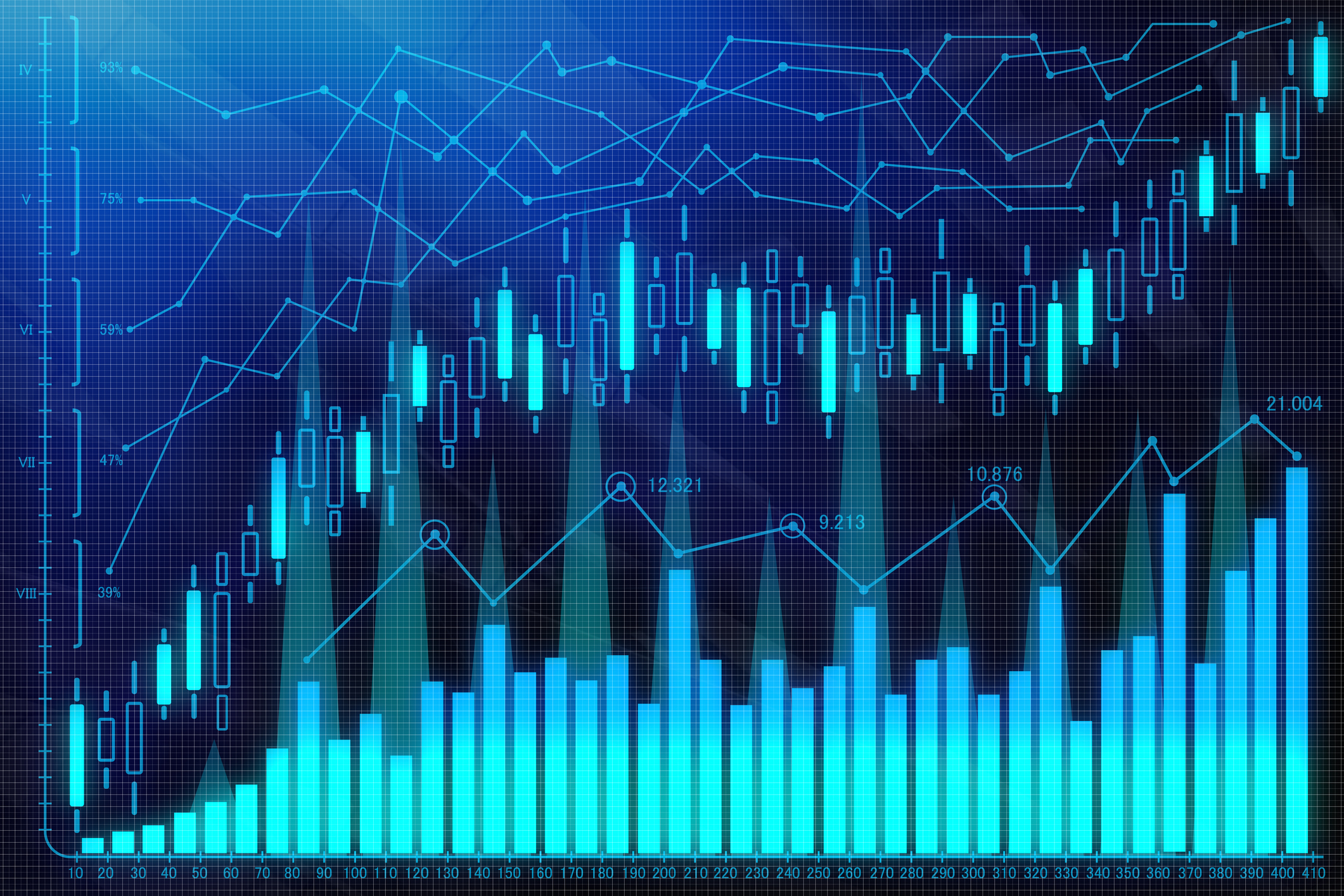Are Stocks Cheap Enough to Start Buying?
Stocks are cheaper than they've been in years, but that doesn't mean bargain-hunting investors should start buying hand over fist.


The S&P 500 Index is down more than 22% for the year-to-date, putting it on track for its worst annual return since the 2008 financial crisis. This has many wondering if stocks are cheap enough to start buying?
Barron's recent Big Money poll surveyed money managers about their outlook for stocks over the next 12 months. Approximately 40% of the respondents were bullish, a surprisingly high figure given all the talk of recession.
While that 40% figure is 700 basis points (a basis point = 0.01%) higher than in the same survey from last spring and does, in fact, signal increasing sentiment among some money managers, it should also be noted that bearish sentiment was also up (to 30% from 22%). This left 30% of respondents saying they were neutral on their outlook for stocks over the next 12 months, down from the 45% seen in late April.
From just $107.88 $24.99 for Kiplinger Personal Finance
Become a smarter, better informed investor. Subscribe from just $107.88 $24.99, plus get up to 4 Special Issues

Sign up for Kiplinger’s Free Newsletters
Profit and prosper with the best of expert advice on investing, taxes, retirement, personal finance and more - straight to your e-mail.
Profit and prosper with the best of expert advice - straight to your e-mail.
So, the outlook for stocks by professional investors has seemingly become more certain – positive or negative – heading into 2023.
But what does this mean for retail investors who may be considering going bargain-hunting in today's market?
Stocks Are Historically Cheap Right Now
Data from Yardeni Research shows that the forward price-to-earnings (P/E) ratio for the S&P 500 as of Nov. 2 is 16.1, down considerably from over 22 in late 2020.
The tricky part with determining just how cheap stocks are is that every statistic or data point has a plausible opposing argument. So we won't know when stocks are at their lowest point until it's too late.
And just because stock valuations are relatively low right now doesn't mean you should dive right in for fear of missing out. True, we are in a historically bullish stretch for the stock market and technical analysis points to short-term upside for equities.
However, there are also several signs that stocks could have further to fall. For instance, Savita Subramanian, equity and quantitative strategist at BofA Securities, reminds investors about the Rule of 20. It says that a sustainable bottom is never hit when the U.S. market's S&P 500 P/E ratio and consumer price index (CPI) combined have a value of more than 20. Currently, this figure sits closer to 30.
BofA says other warning signs exist too.
"Our bull market signposts continue to suggest that the market hasn't yet bottomed," Subramanian says. These signposts include the Rule of 20, as well as a steepening yield curve and the Federal Reserve cutting interest rates, among others.
Likewise, Goldman Sachs believes the markets are still expensive despite being down more than 22% in 2022. One indicator they point to is the earnings yield gap, which measures the difference between government bond yields and equity dividend yields.
"Despite elevated recession risk, geopolitical tension, and a generally murky macro outlook, the earnings yield gap – a common proxy for the equity risk premium – trades close to the tightest levels in 15 years," says a team of Goldman Sachs strategists.
Translation: the risk/reward proposition for stocks isn't good, based on this metric.
Should Investors Buy Stocks Right Now?
That depends. Investors may first want to consider their time horizon before jumping in.
The seasoned professional realizes that a long-term investment horizon goes a long way to winning in the markets. And while 2023 could very well be a second consecutive down year for stocks, markets ultimately go up more than they go down.
Capital Group, a Los Angeles-based money manager, published an article in 2019 entitled "Time, Not Timing, is What Matters." It showed that over 91 years if you invested for one-year periods – meaning investing money at the beginning of the year and pulling it out at the end – you would have had positive returns 73% of the time.
If you run the same drill over three, five, and 10-year periods, you get positive outcomes 83%, 87% and 94%, respectively. So the longer money was invested, the higher the probability of positive returns.
And with stocks cheaper than they’ve been in several years, it's easy to see why so many money managers are enthusiastic about the future.
"We're super excited about what the next decade looks like for investors," Lisa Shalett, chief investment officer of Morgan Stanley Wealth Management, said in a late-September Barron's article. "It looks very different from the past 14 years. The opportunities are much more diversified and broader."
What's more, "this year's bear market provides an attractive opportunity for long-term investors, in our view," Subramanian says. "Heading into this year, our long-term valuation model had forecast negative returns over the next decade (-1% per year). But today, it forecasts +6% per year price returns, the highest level since May 2020. With ~2% dividends, it implies ~8% in total returns, handily beating the risk-free rate of 4%."
And Goldman Sachs strategists say there are areas of the market where stocks are cheap enough to find good bargains. These include value stocks and small-cap stocks, which look attractive relative to their growth and large-cap peers, respectively.
Profit and prosper with the best of Kiplinger's advice on investing, taxes, retirement, personal finance and much more. Delivered daily. Enter your email in the box and click Sign Me Up.

Will has written professionally for investment and finance publications in both the U.S. and Canada since 2004. A native of Toronto, Canada, his sole objective is to help people become better and more informed investors. Fascinated by how companies make money, he's a keen student of business history. Married and now living in Halifax, Nova Scotia, he's also got an interest in equity and debt crowdfunding.
-
 Dow Adds 646 Points, Hits New Highs: Stock Market Today
Dow Adds 646 Points, Hits New Highs: Stock Market TodayIt was "boom" for the Dow but "bust" for the Nasdaq following a December Fed meeting that was less hawkish than expected.
-
 5 Types of Gifts the IRS Won’t Tax: Even If They’re Big
5 Types of Gifts the IRS Won’t Tax: Even If They’re BigGift Tax Several categories of gifts don’t count toward annual gift tax limits. Here's what you need to know.
-
 The 'Scrooge' Strategy: How to Turn Your Old Junk Into a Tax Deduction
The 'Scrooge' Strategy: How to Turn Your Old Junk Into a Tax DeductionTax Deductions We break down the IRS rules for non-cash charitable contributions. Plus, here's a handy checklist before you donate to charity this year.
-
 Dow Adds 646 Points, Hits New Highs: Stock Market Today
Dow Adds 646 Points, Hits New Highs: Stock Market TodayIt was "boom" for the Dow but "bust" for the Nasdaq following a December Fed meeting that was less hawkish than expected.
-
 Dow Rises 497 Points on December Rate Cut: Stock Market Today
Dow Rises 497 Points on December Rate Cut: Stock Market TodayThe basic questions for market participants and policymakers remain the same after a widely expected Fed rate cut.
-
 JPMorgan's Drop Drags on the Dow: Stock Market Today
JPMorgan's Drop Drags on the Dow: Stock Market TodaySmall-cap stocks outperformed Tuesday on expectations that the Fed will cut interest rates on Wednesday.
-
 Stocks Slip to Start Fed Week: Stock Market Today
Stocks Slip to Start Fed Week: Stock Market TodayWhile a rate cut is widely expected this week, uncertainty is building around the Fed's future plans for monetary policy.
-
 Stocks Keep Climbing as Fed Meeting Nears: Stock Market Today
Stocks Keep Climbing as Fed Meeting Nears: Stock Market TodayA stale inflation report and improving consumer sentiment did little to shift expectations for a rate cut next week.
-
 Small Caps Hit a New High on Rate-Cut Hope: Stock Market Today
Small Caps Hit a New High on Rate-Cut Hope: Stock Market TodayOdds for a December rate cut remain high after the latest batch of jobs data, which helped the Russell 2000 outperform today.
-
 UNH Sparks a 408-Point Surge for the Dow: Stock Market Today
UNH Sparks a 408-Point Surge for the Dow: Stock Market TodayThe best available data right now confirm both a slowing employment market and a December rate cut, a tension reflected at the equity index level.
-
 Stocks Bounce Back With Tech-Led Gains: Stock Market Today
Stocks Bounce Back With Tech-Led Gains: Stock Market TodayEarnings and guidance from tech stocks and an old-school industrial lifted all three main U.S. equity indexes back into positive territory.